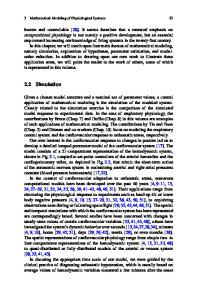Mathematical Modeling and Analysis of Force Output
Force output is extremely important for electromagnetic linear machines. The purpose of this chapter is to formulate the force output of tubular linear machine with dual Halbach array. Based on the magnetic field model derived in the last chapter and Lore
- PDF / 502,561 Bytes
- 18 Pages / 439.37 x 666.142 pts Page_size
- 94 Downloads / 333 Views
Mathematical Modeling and Analysis of Force Output
Abstract Force output is extremely important for electromagnetic linear machines. The purpose of this chapter is to formulate the force output of tubular linear machine with dual Halbach array. Based on the magnetic field model derived in the last chapter and Lorentz force law, the thrusts for single-phase, double-phase, and three-phase tubular linear machines are obtained analytically. The influence of the starting positions of the mover on the force output is also analyzed comprehensively. Numerical computation is conducted on the force output to validate the analytical solutions. The comparison shows that the analytical model fits with the numerical result well.
3.1 Introduction The force modeling of electromagnetic linear machine is to establish the relationship between current input and force output mathematically. It can achieve two functionalities [1]. One typical usage is for computer simulation of the linear machine. Given one set of current inputs, force output of the linear machine can be calculated according to the force model. Based on forward dynamics of the machine, we can simulate how the machine moves under the action of the force. Another significant use of the force model is for position and velocity servo control. According to inverse dynamics of a linear machine, the desired force output can be computed from the desired displacement, velocity and acceleration of the mover. Then by utilizing the toque model, required currents can be calculated from the desired force output. These currents are supplied to the electric machine so that it can follow the desired motion. Generally speaking, there are three types of methods that can be employed for the calculation of the force modeling of electromagnetic linear machine, i.e., Maxwell stress tensor method (MST), coenergy method and Lorentz force law. The MST approach computes local stress at all points of a boundary surface of a body, then sums the local stresses to obtain the global magnetic force/torque [2]. This classic method is usually used in finite element (FE) solution of force/torque computation [3]. For example, Adamiak et al. took advantage of MST to compute the thrust and normal force of a single-sided linear induction motor [4]. A method based on MST has been proposed by Zhou et al. to obtain the force ripples of a Halbach PM © Springer Science+Business Media Singapore 2017 L. Yan et al., Electromagnetic Linear Machines with Dual Halbach Array, DOI 10.1007/978-981-10-2309-5_3
35
36
3 Mathematical Modeling and Analysis of Force Output
ironless linear motor with trapezoid windings [5]. MST is convenient to determine the electromagnetic force on the interface and it can be used to describe the thrust conveniently. This method is very sensitive to the discrete density and contour shape. And it is difficult to define the boundary surface in three-dimensional problems. The coenergy method [6] can be employed to obtain the force model of electromagnetic products analytically. Many electrom
Data Loading...











